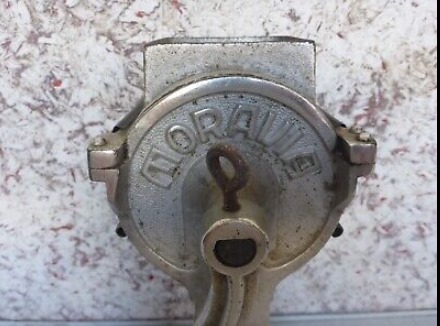
Have you ever wondered about the history of your trusty kitchen mixer? Well, the journey of this handy tool is quite fascinating!
Starting in the mid-19th century, several inventors made significant contributions to the development of the kitchen mixer. Ralph Collier, a tinner from Baltimore, Maryland, patented the first mixer with rotating parts in 1856. Not long after, E.P. Griffith introduced his whisk in England in 1857. Then, in 1859, J.F. and E.P. Monroe patented a hand-turned rotary egg beater in the United States.
The Monroe egg beater patent caught the attention of the Dover Stamping Company, who saw its potential. They acquired the patent and turned the Dover egg beater into a classic American brand. In fact, the term “Dover beater” was commonly used in February 1929, as seen in this recipe for a delicious whipped dessert called “Hur-Mon Bavarian Cream.”
Over the years, other inventors continued to refine and improve the design of the egg beater. Turner Williams of Providence, R.I., invented a new Dover egg beater model in 1870, and Willis Johnson of Cincinnati, Ohio, introduced further improvements in 1884.
It wasn’t until 1885 that Rufus Eastman invented the first electric mixer. This groundbreaking invention revolutionized the way people mixed ingredients in their kitchens. Meanwhile, the Hobart Manufacturing Company played a significant role in the commercial mixer industry. Their new model introduced in 1914 became a game-changer.
In the early 1900s, two iconic American brands, the Hobart KitchenAid and Sunbeam Mixmaster, made their debut. However, it was not until the 1920s that electric mixers started to become popular for domestic use in households across the country.
One engineer, Herbert Johnston, from the Hobart Manufacturing Company, had a brilliant idea in 1908. He observed a baker mixing bread dough with a metal spoon and thought of creating a mechanical counterpart. Inspired by this, he invented the first electric standing mixer. By 1915, his 20-gallon mixer became a standard tool in most large bakeries.
Finally, in 1919, Hobart introduced the Kitchen Aid Food Preparer, which was specifically designed for home use. This stand mixer quickly became a must-have appliance in many households.
And there you have it – the incredible journey of the kitchen mixer, from its humble beginnings as a hand-turned egg beater to the revolutionary electric standing mixers we know and love today. So next time you whip up a delicious treat in your kitchen, remember the history behind your trusty mixer!





